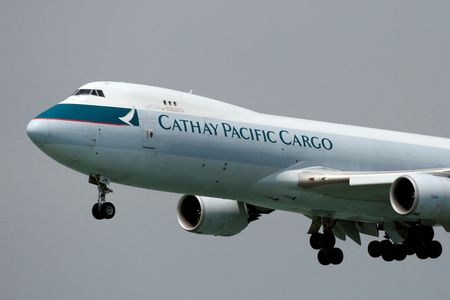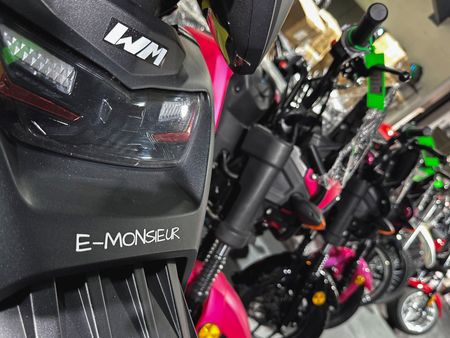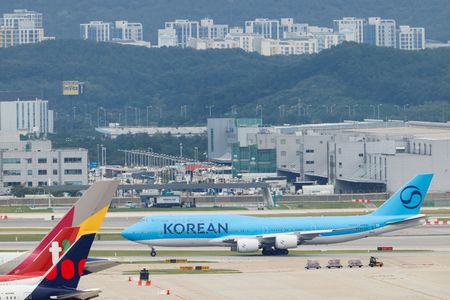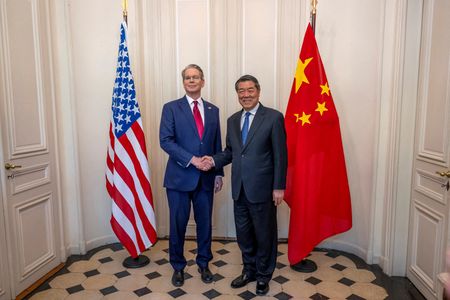By Lisa Barrington
SEOUL (Reuters) -Air freight capacity between China and the U.S. dropped by almost a third after a tax-free exemption for low-value items out of China was removed this month, industry data showed, denting a significant revenue stream for Asia’s major airlines.
Air cargo carriers including Cathay Pacific, China Southern, Air China and Korean Air have profited from booming volumes of e-commerce, led by fast-fashion retailers such as Shein and PDD Holdings’ Temu, flowing from China to the United States.
A trade war detente on Monday between Washington and Beijing temporarily lowered reciprocal tariffs from more than 100%, prompting U.S. firms to resume orders from China.
However, the “de minimis” duty-free access for low-value shipments from China and Hong Kong into the United States remains suspended and could weaken demand longer term, industry experts said.
Air cargo capacity is starting to recover since Monday’s agreement, said Marco Bloemen, managing director of air cargo consultancy Aevean. “But on the e-commerce side, though, volumes have been temporarily affected.”
The sudden drop in cargo demand for U.S. shipments and dim prospects for a solid rebound create headwinds for airlines in Asia as they grapple with both a fall in passenger air fares and concerns over a global recession.
Cargo makes up around a quarter of Cathay and Korean Air’s overall revenues. Cargo yields and revenues at a number of Asia’s airlines grew significantly faster than their passenger segments last year.
Last year low-value e-commerce shipments – at 1.2 million tonnes – made up 55% of goods shipped from China to the United States by air, compared to just 5% in 2018, an Aevean analysis showed.
Buoyed by strong air freight demand out of Asia since the pandemic, freight majors like Hong Kong-based Cathay, Singapore Airlines and Taiwan’s China Airlines have ordered large, new freighters for the busiest trade routes.
But with “de minimis” exemptions unlikely to return, the likes of Shein and Temu are increasingly looking to ship products in bulk via sea to the U.S. or other warehousing locations instead of making individual shipments by plane direct to consumers.
Reuters reported on Thursday that fast fashion retailer Shein was leasing a huge warehouse in Vietnam in a move that could reduce its exposure to unpredictable U.S.-China trade tensions.
Cathay, which operates from the world’s largest cargo airport, warned last month it was expecting air cargo demand between mainland China and the U.S. to weaken from this month, as tariff hikes take hold.
Cathay did not immediately respond to a request for comment.
SCRAMBLE
Operators flew 26% less freight capacity from China and Hong Kong to the United States between the May 2 “de minimis” suspension and the May 13 detente compared with a year earlier, data from air cargo consultancy Rotate showed.
Capacity was down 30% compared with an average of the previous four weeks.
South Korea, a cargo hub which has benefited from the increasing volume of e-commerce out of China, saw a 22% fall in U.S.-bound capacity between May 2 and 13.
Korean Air said in mid-April it expected volatility in air freight demand to intensify as tariffs were imposed.
The falls reverse a trend of capacity being on average 15% higher than the year prior during the preceding 12 months from China, and 14% higher from South Korea.
U.S.-headquartered Atlas Air, which operates the most capacity on the Greater China to U.S. route, saw a 28% fall in capacity from May 2 to 13 from a year prior, Rotate data showed.
Cathay Pacific saw a 2% drop, and Chinese state-owned China Southern’s capacity fell 30%.
For airlines with freighter aircraft, cargo was a lifeline during the pandemic when nearly all international passenger flights were grounded.
Several Asia-Pacific airlines said in financial reports covering the period before the tariffs took effect they would seek to move capacity to other routes to deal with fluctuating demand.
Asia-focused freight forwarder Dimerco this month said several scheduled freighter services were cancelled on the China-U.S. corridor, with some capacity rerouted to Mexico and Latin America.
Roughly 70 freighters stopped flying for a while on the Transpacific routes, but some were deployed in other markets, Bloemen said.
Countries in Southeast Asia stand to gain should manufacturers choose to make or ship goods to the United States from countries other than China – although many of those countries also face new tariffs.
Singapore Airlines, based in Southeast Asia, said shifts in trade flows might open new opportunities.
“Issues associated with tariff changes are not likely to deliver a shock quite the same as COVID-19, but it does mean it will be a lot more uncertain,” Singapore Airlines CEO Goh Choon Phong told media on Friday.
(Reporting by Lisa Barrington; Editing by Miyoung Kim and Kate Mayberry)











